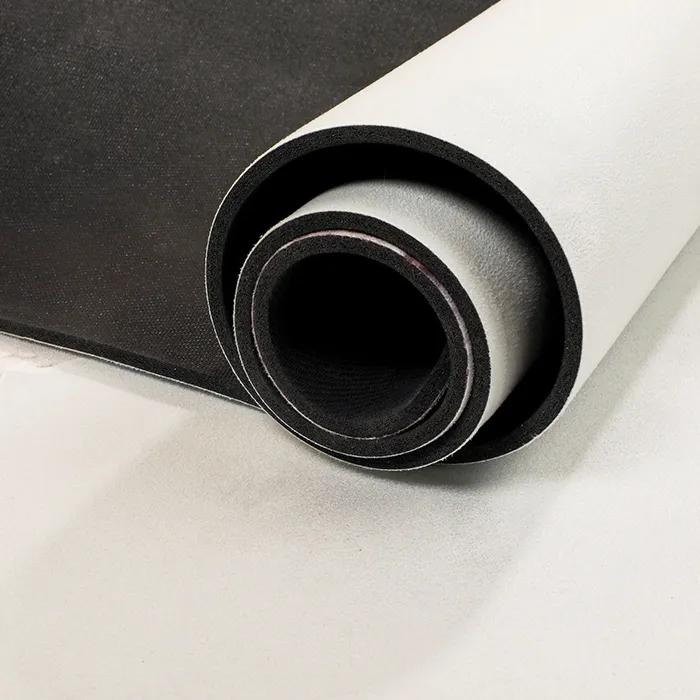Yoga is a practice that nourishes both the body and the mind, but for individuals with allergies or sensitive skin, finding the right yoga equipment can be a challenge. Traditional yoga mats, often made from synthetic materials like PVC or latex, can trigger allergic reactions or skin irritation in some practitioners. However, there’s a solution that not only supports your practice but also caters to your sensitivity: natural rubber mats.
Hypoallergenic Properties of Natural Rubber Mats
Natural rubber mats are crafted from the sap of the rubber tree, Hevea brasiliensis. This material is inherently hypoallergenic, making it an excellent choice for individuals with allergies or sensitive skin. Unlike synthetic alternatives, natural rubber does not contain harmful chemicals or irritants that can exacerbate allergies or cause skin reactions.
Non-Toxic and Chemical-Free
One of the key benefits of natural rubber mats is their non-toxic composition. They are free from harmful chemicals such as phthalates, PVC, and heavy metals, which are commonly found in synthetic yoga mats. This means that sensitive yogis can practice with peace of mind, knowing that they are not exposing themselves to potentially harmful substances.
Skin-Friendly and Breathable
Natural rubber mats are gentle on the skin, making them suitable for those prone to irritation or allergic reactions. The porous nature of rubber allows for breathability, preventing moisture buildup during intense yoga sessions. This helps to maintain a dry and comfortable practice environment, reducing the risk of skin irritation caused by trapped sweat or moisture.
Anti-Microbial and Easy to Clean
Another advantage of natural rubber mats is their antimicrobial properties. Rubber naturally resists the growth of bacteria, mold, and mildew, keeping your yoga mat clean and hygienic. Additionally, these mats are easy to clean with just a simple wipe-down using a mild soap and water solution. This makes maintenance hassle-free, ensuring that your mat remains fresh and odor-free after each use.
Durability and Support
In addition to their hypoallergenic properties, natural rubber mats offer durability and support for your yoga practice. The dense yet cushioned surface provides excellent traction and stability, allowing you to move confidently through your poses without slipping or sliding. This ensures a safe and comfortable practice experience, regardless of your level of expertise.
Eco-Friendly Choice
Beyond their benefits for sensitive yogis, natural rubber mats are also an eco-friendly choice. Rubber trees are a renewable resource that can be sustainably harvested without causing harm to the environment. Furthermore, natural rubber mats are biodegradable, meaning they will naturally decompose at the end of their lifespan, minimizing their environmental impact.
For individuals with allergies or sensitive skin, choosing the right yoga mat is essential for a comfortable and enjoyable practice. Natural rubber mats offer a hypoallergenic alternative that provides the perfect balance of support, durability, and eco-friendliness. With their non-toxic composition, skin-friendly properties, and antimicrobial benefits, these mats are the ideal choice for sensitive yogis looking to deepen their practice without compromising their well-being.
Explore, customize, purchase, and wholesale Natural Rubber Yoga Mats products.
FAQ
- Are natural rubber mats suitable for people with latex allergies? Natural rubber mats are generally safe for individuals with latex allergies, as the proteins that trigger latex allergies are usually removed during the manufacturing process. However, individuals with severe latex allergies should consult with a healthcare professional before using a natural rubber mat.
- How do I clean and maintain a natural rubber yoga mat? Cleaning a natural rubber mat is easy! Simply wipe it down with a mixture of mild soap and water after each use, and allow it to air dry. Avoid using harsh chemicals or abrasive cleaners, as they may damage the mat’s surface.
- Do natural rubber mats have a strong odor? Natural rubber mats may have a slight rubbery odor when first unpackaged, but this dissipates over time with proper airing out. You can also accelerate the process by wiping the mat with a solution of water and vinegar or leaving it in a well-ventilated area.
- Can I use natural rubber mats for hot yoga or intense workouts? Yes, natural rubber mats are suitable for hot yoga and intense workouts. Their porous nature allows for breathability, preventing moisture buildup and providing excellent grip even in sweaty conditions.
- How long do natural rubber mats last? The lifespan of a natural rubber mat depends on factors such as frequency of use and care. With proper maintenance, including regular cleaning and avoiding prolonged exposure to direct sunlight, a high-quality natural rubber mat can last for several years.
